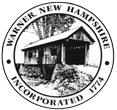Wildlife Habitat
What sources of food and shelter for wildlife do you see here?
New Hampshire is home to around 500 species of birds, mammals, reptiles and amphibians—not to mention thousands of species of beetles, bugs, and other invertebrates. Each species lives in an area called a habitat that provides the specific resources – food, water, and shelter – the species needs to survive and reproduce.
This forest habitat offers a variety of mast– fruits, nuts, and seeds – to sustain wildlife. Numerous birds and mammals eat acorns, beechnuts, pine cone seeds, and samaras (winged seeds from maple and ash trees). Of course, not all animals are herbivores (plant-eaters). Some are carnivores (animal-eaters) or omnivores (plant & animal-eaters). Reptiles and amphibians typically prey on invertebrates like insects, spiders, and worms. Insects munching on leaves or burrowing in deadwood and leaf litter are an important food source for birds and small mammals, too.
From this spot, you can see living trees, standing dead trees (snags), and blowdowns, all of which provide shelter or nesting sites for wildlife. The age diversity of trees here furnishes a thick understory cover for ground nesters, saplings for browsers, and mature trees for birds of prey.
